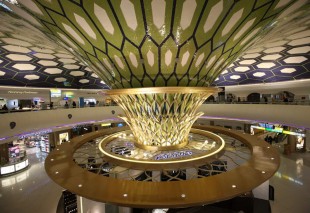

Abu Dhabi airport registers 10 million passengers in Jan to May

Abu Dhabi International Airport (AUH) handled 10.1 million passengers during the first five months of 2017, registering 1.8% increase in traffic compared with the same period in 2016.
The month of May registered a slight decrease in traffic, down 2% when compared with May last year. Ahmed Al Shamsi, acting chief operations officer at Abu Dhabi Airports, attributed this slight drop to fact that all airlines are now operating point to point flights, rather than transit flights, hence the airport is no longer registering any transit passengers in the figures. May 2016 recorded 12,559 transit passengers against zero this month.
Al Shamsi also confirmed that the overall traffic performance of the airport throughout 2017 has been positive. “However, May has always been one of the slowest months of the year being just before the summer holidays rush,” he said.
Al Shamsi added: “Abu Dhabi International Airport has geared up for the busy travel summer holiday season ahead of us. We request locals and residents to register before they travel to use our Smart Travel system. This technology, available upon arrival and departure, ensures a quick and smooth passenger experience.”
India, Saudi Arabia, and the UK have been the largest traffic drivers the airport. Traffic to India, remains one of the airport’s main traffic drivers representing 21% of total passengers in May, although there has been a slight increase of 0.6% this month versus May last year.
Saudi Arabia has become the second largest markets for Abu Dhabi airport growing sharply by 7.8%, affected by the significant increase in passengers to Riyadh and Jeddah for Umrah.
The third largest market driving traffic is the UK, growing by 12% this month compared to same month last year.
Passenger traffic to Australia grew significantly and recorded a 24% rise, affected by Etihad’s double daily flights to Sydney.
The airport’s top two destinations for May were Mumbai growing by 3% due to the increase in the transfer and departure passengers, followed by London growing by 7% due to the increase in capacity by operating A380s on the route.